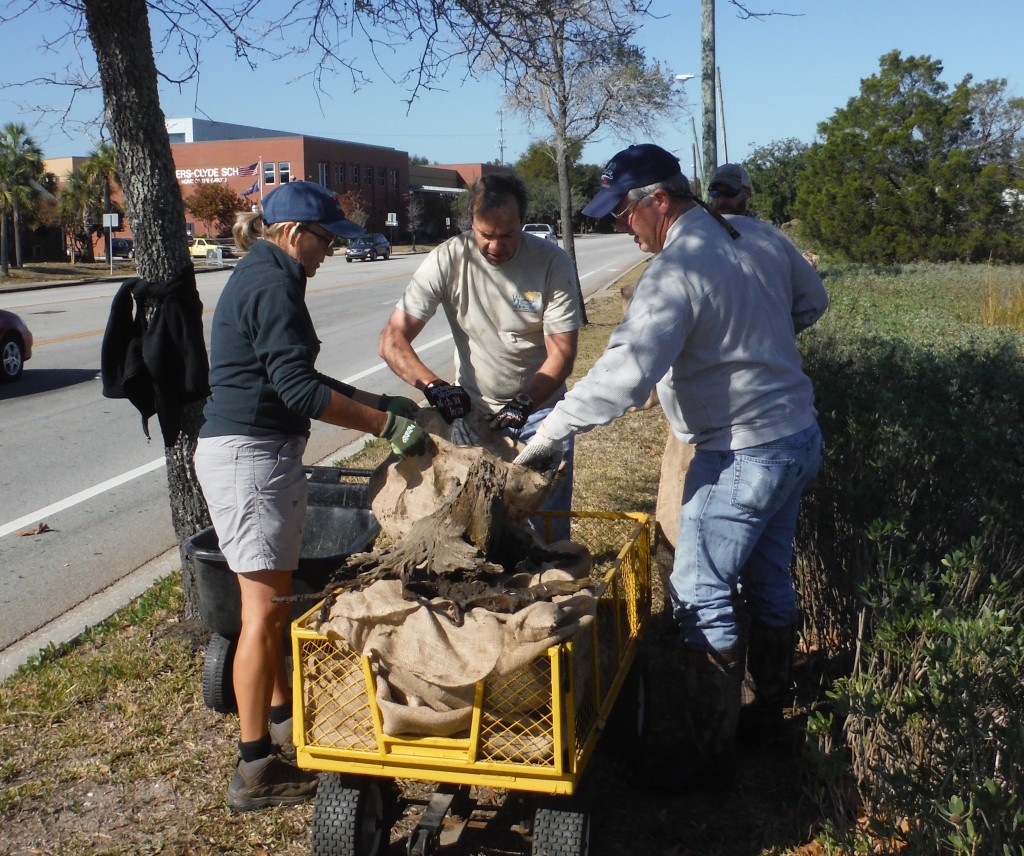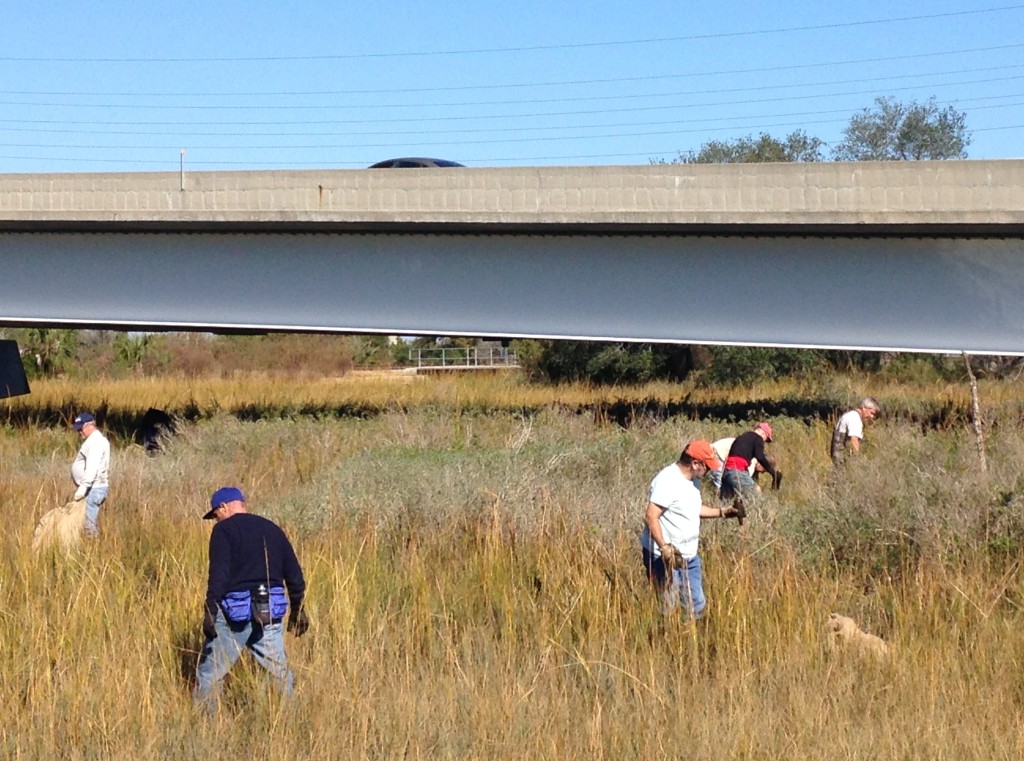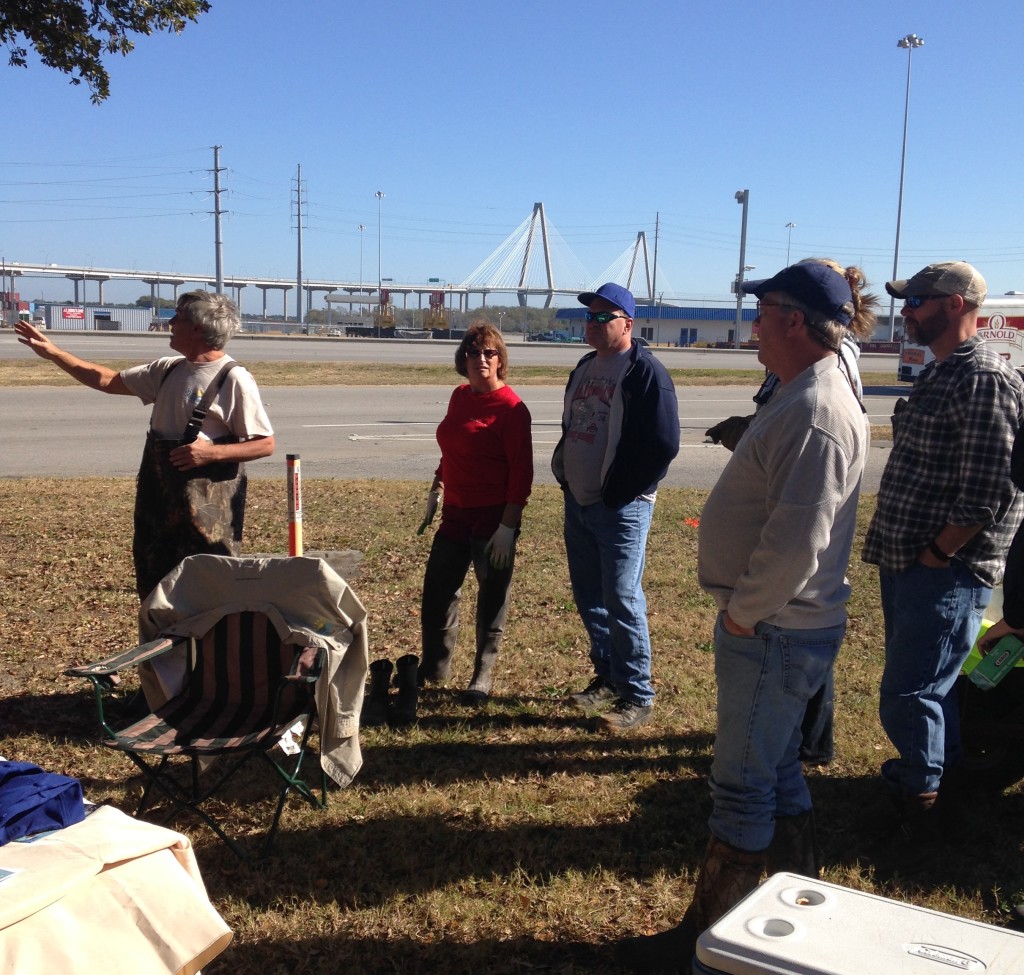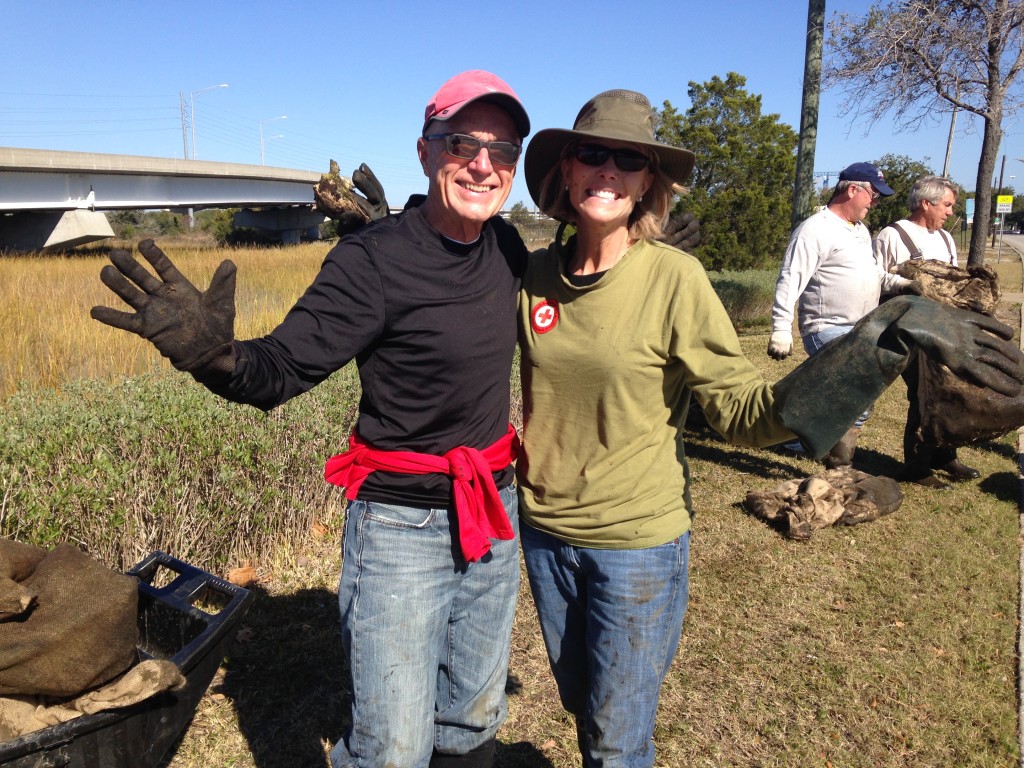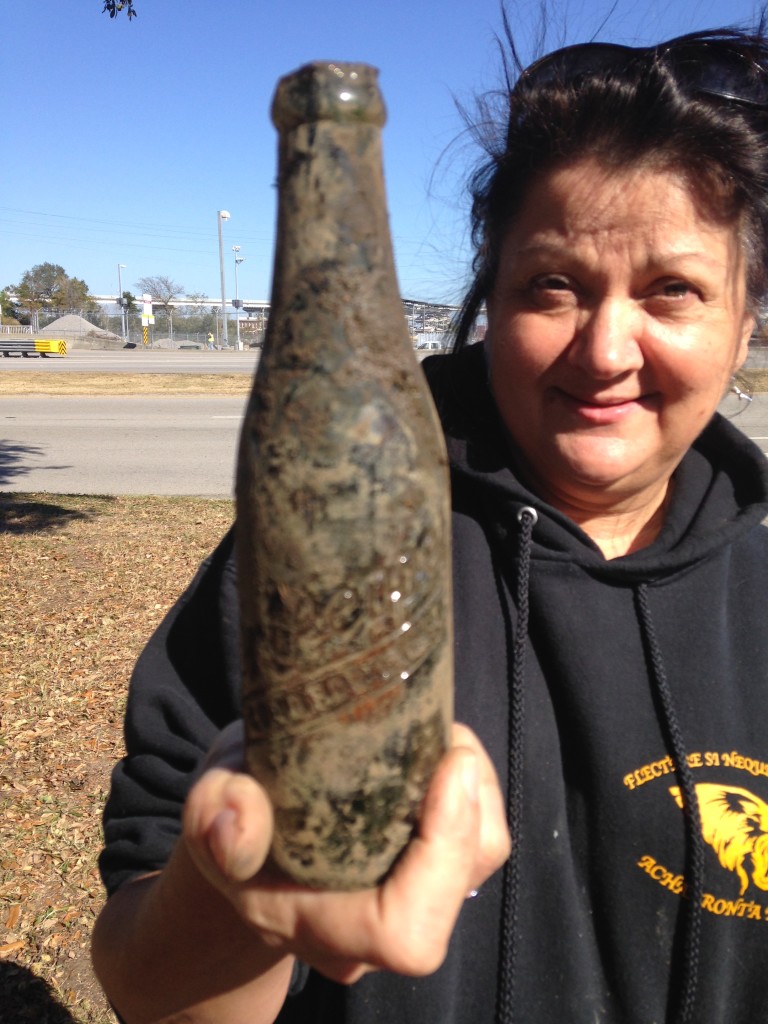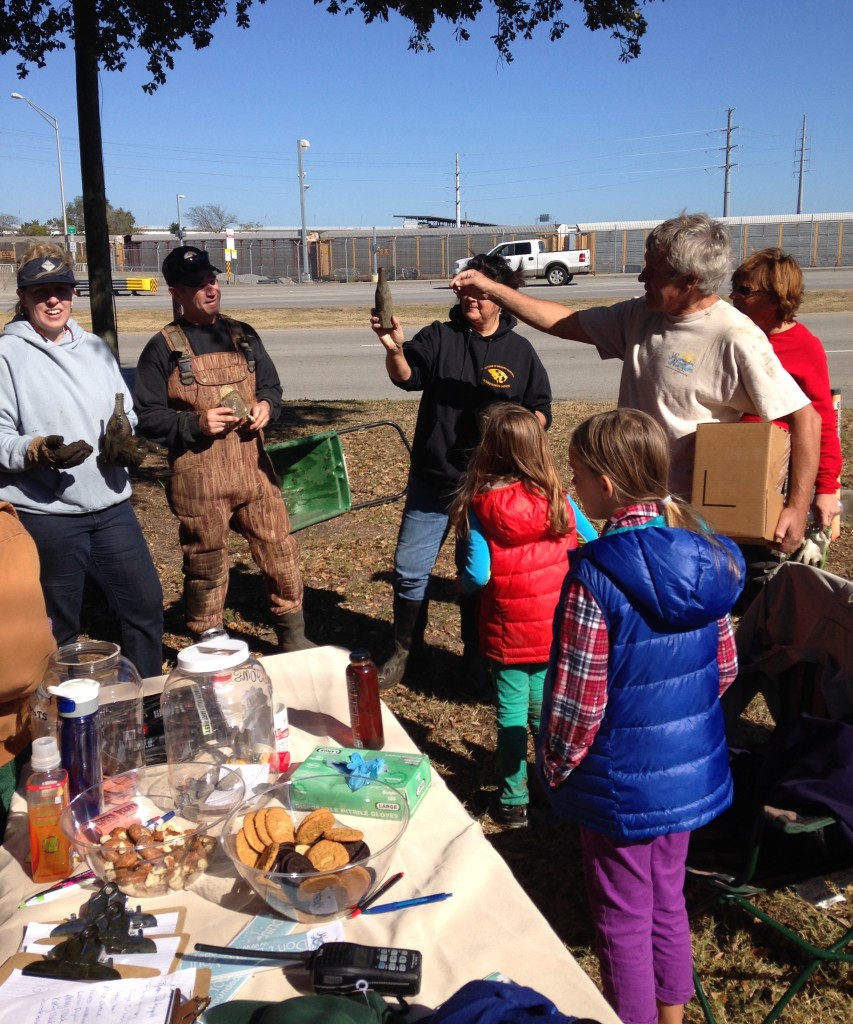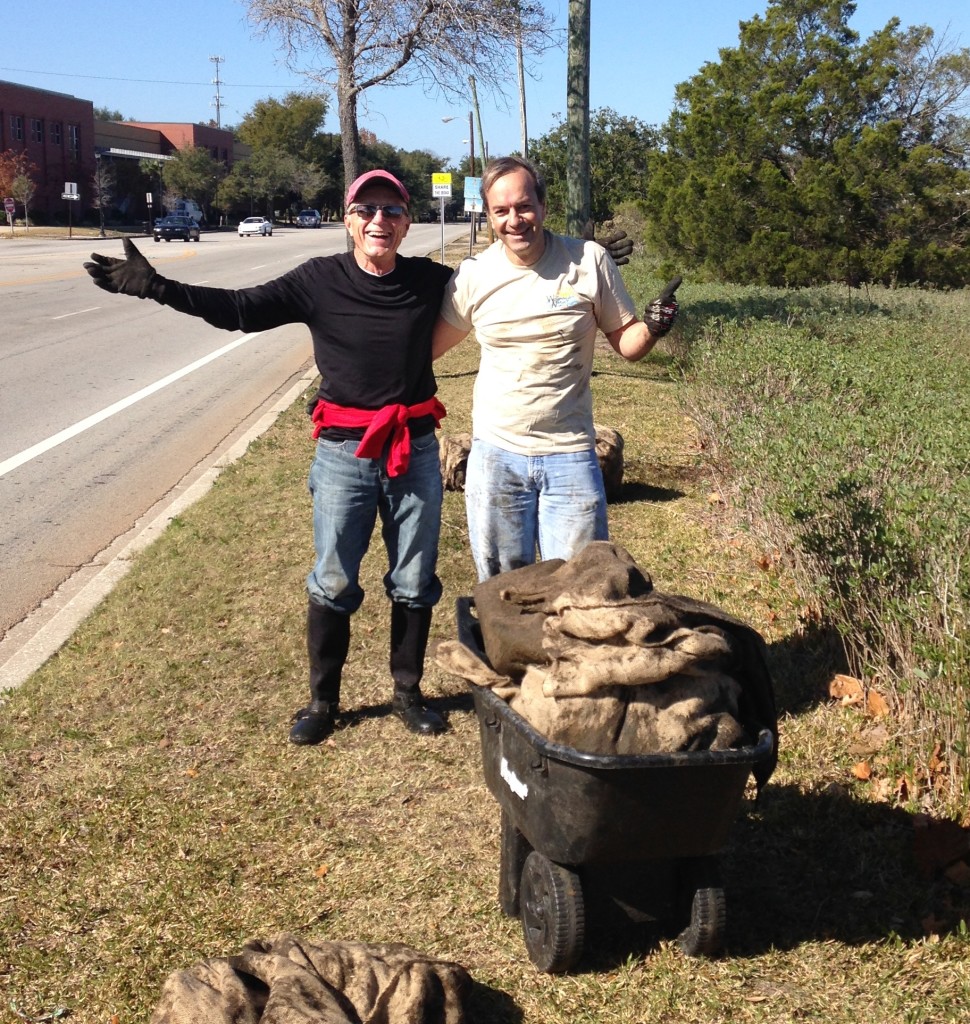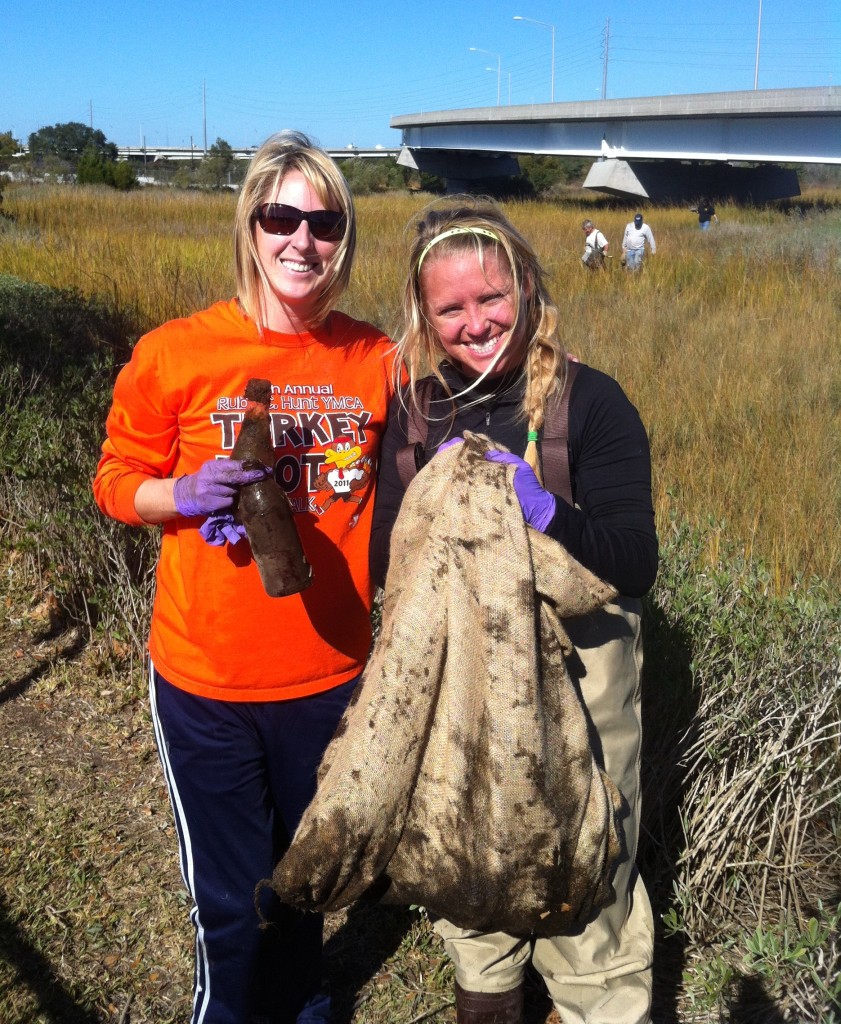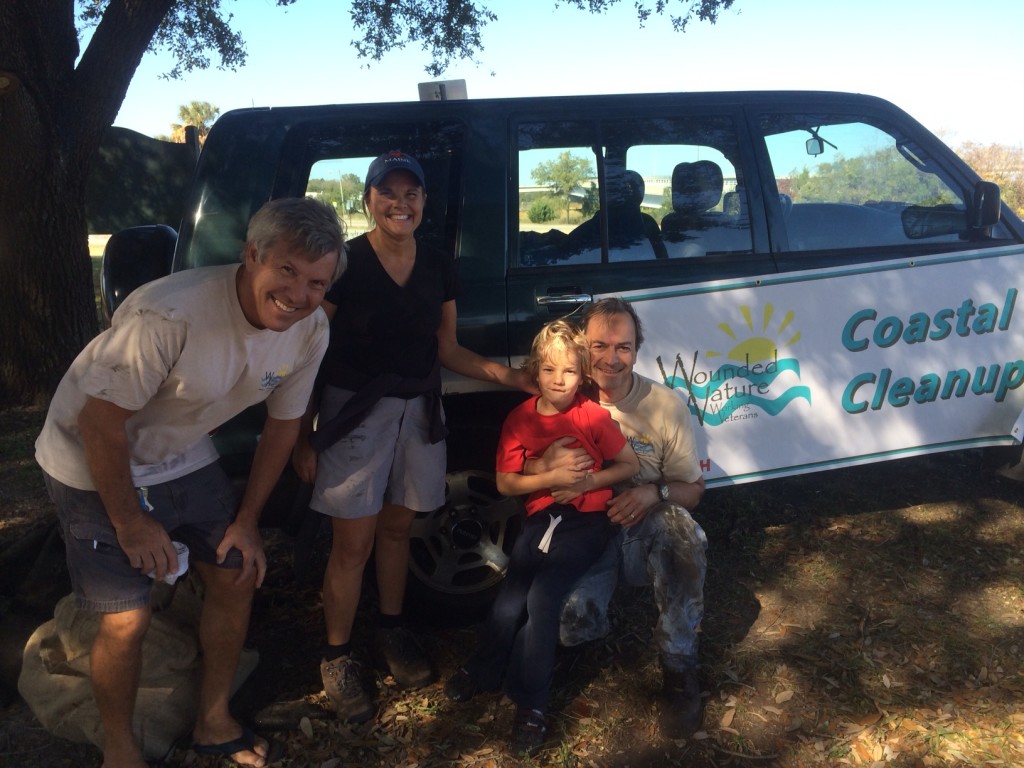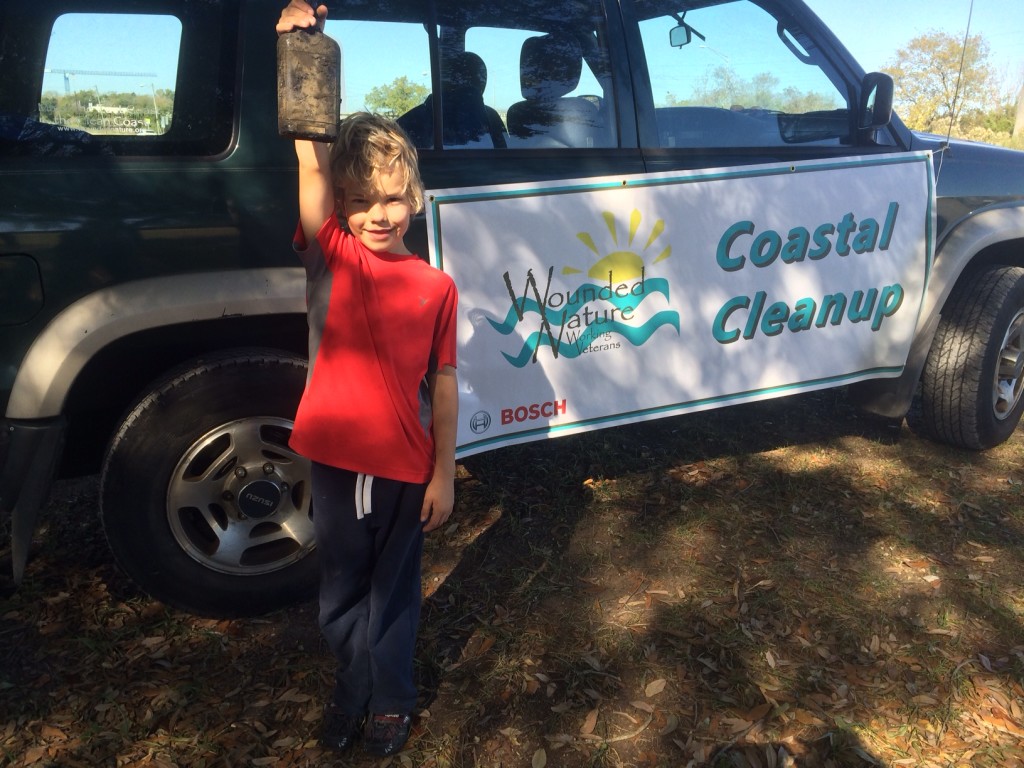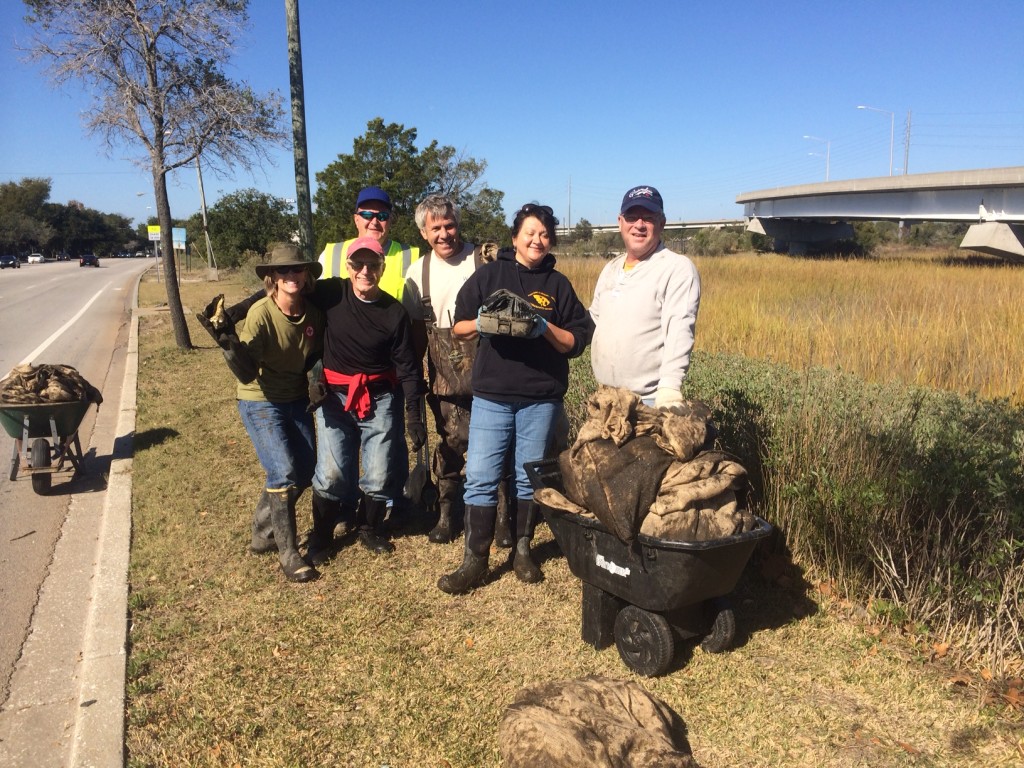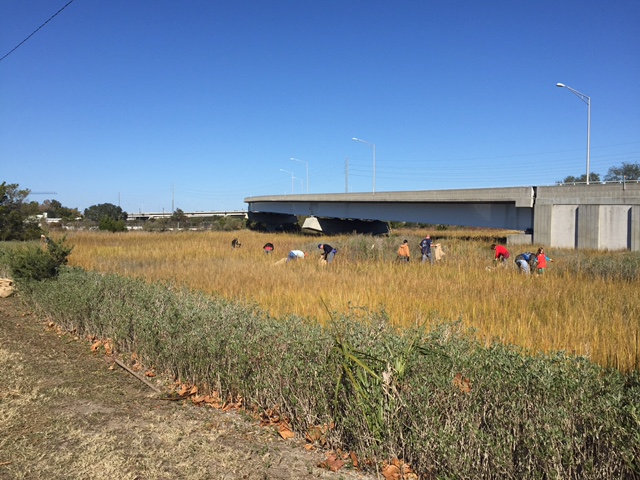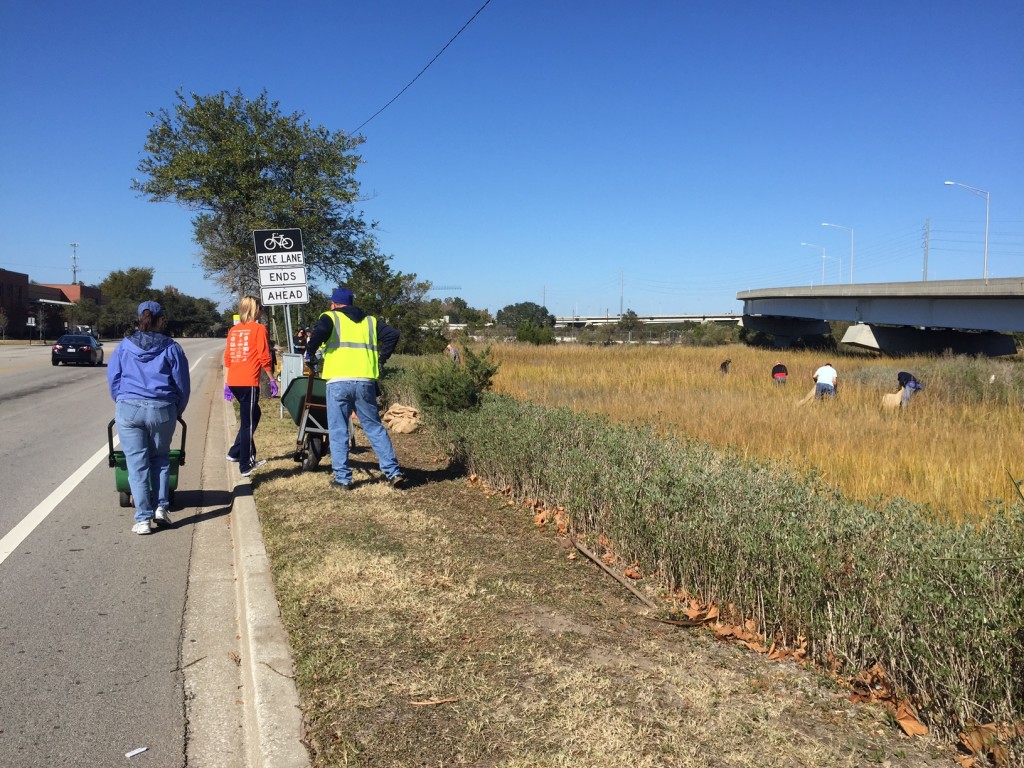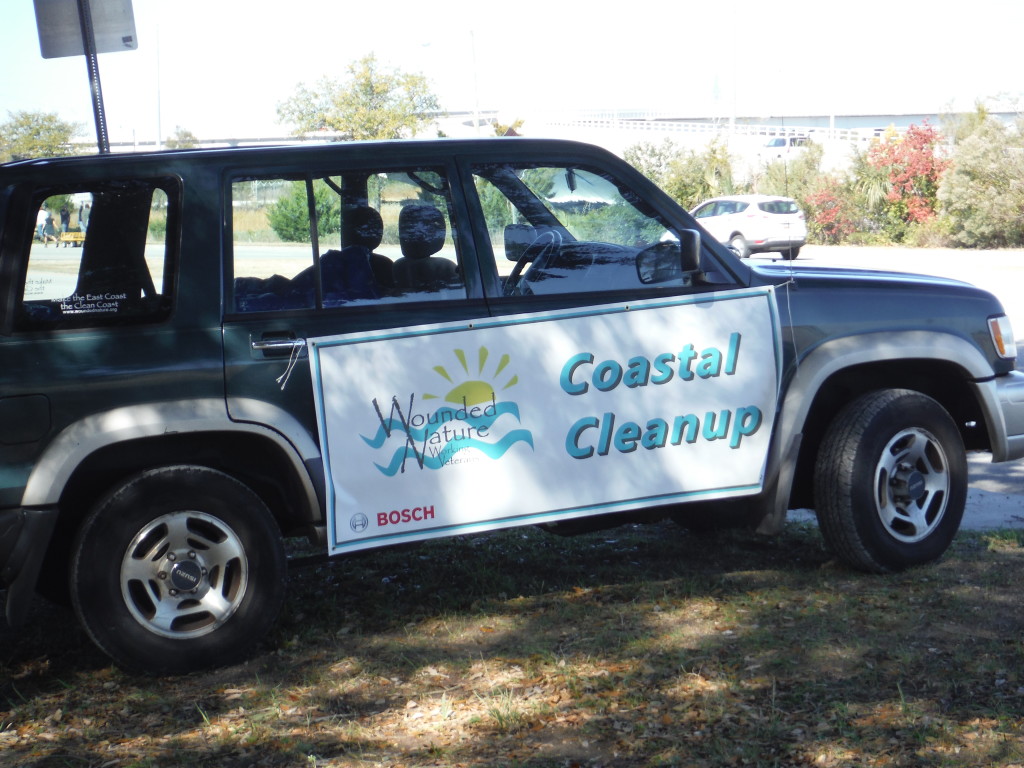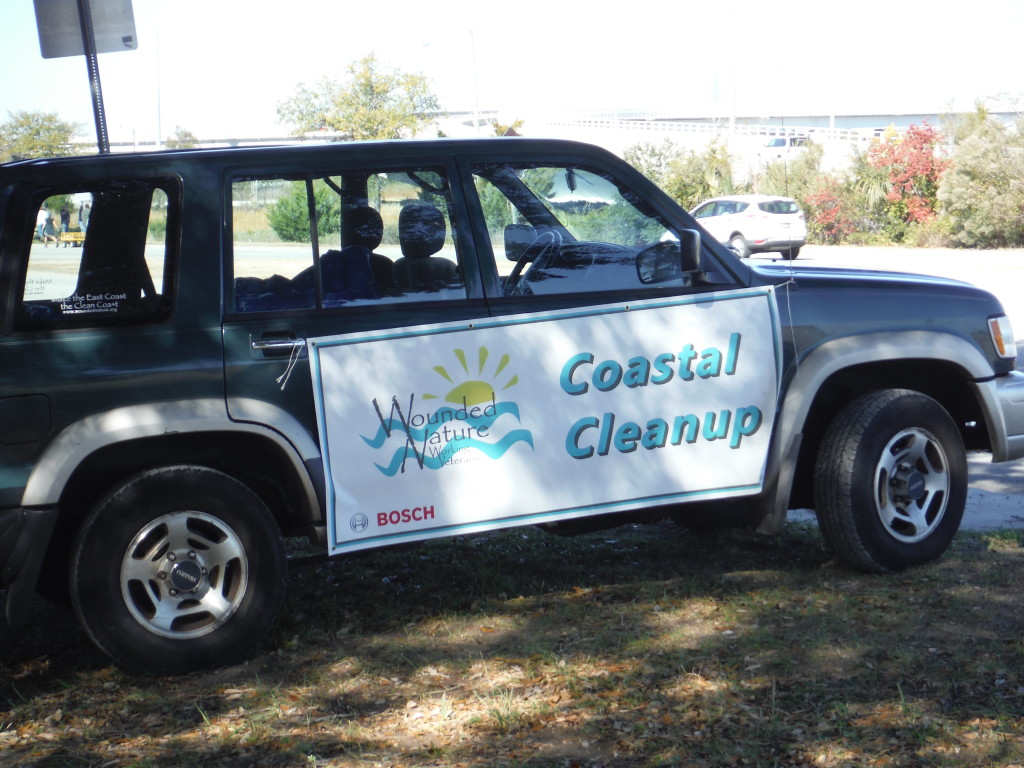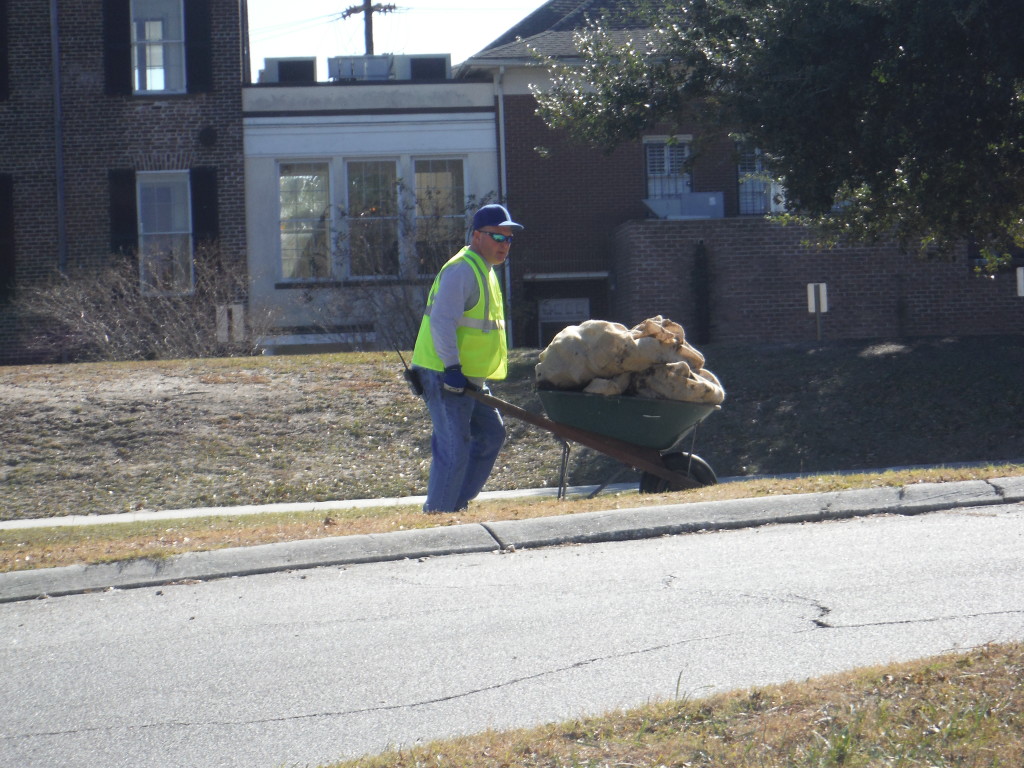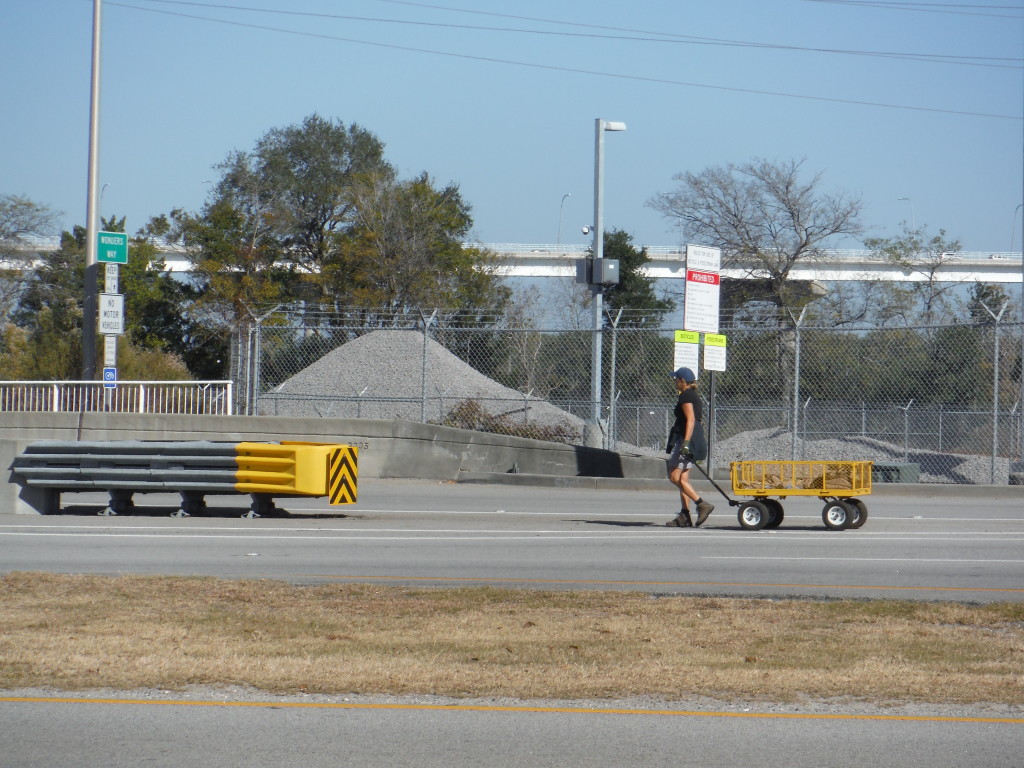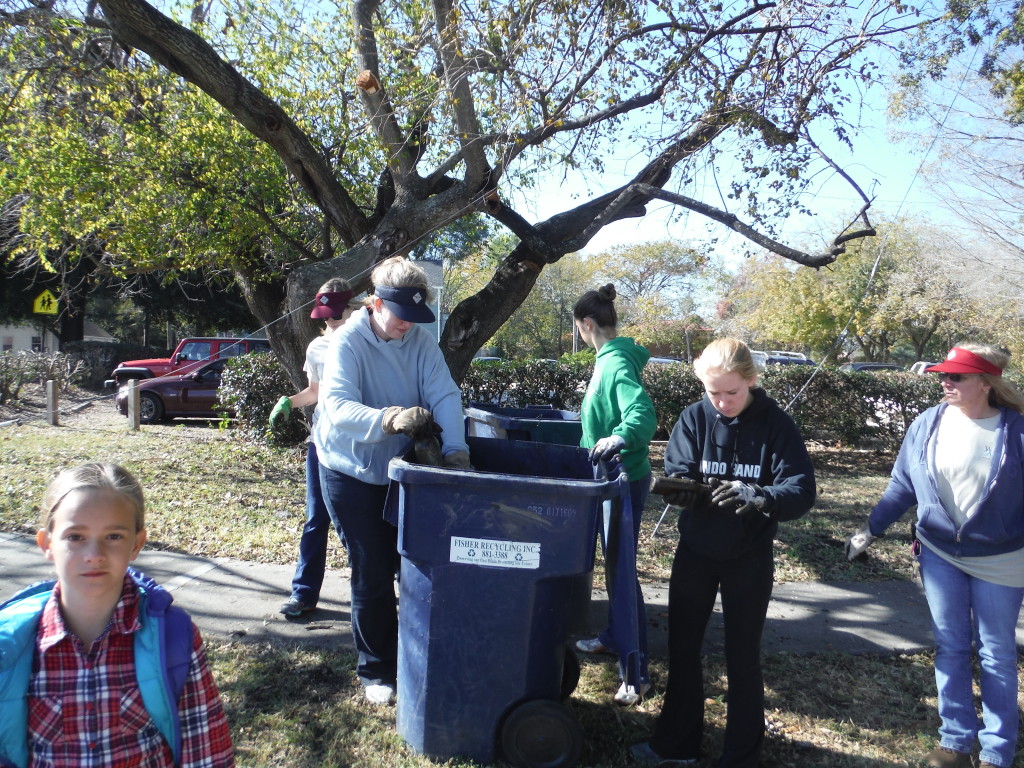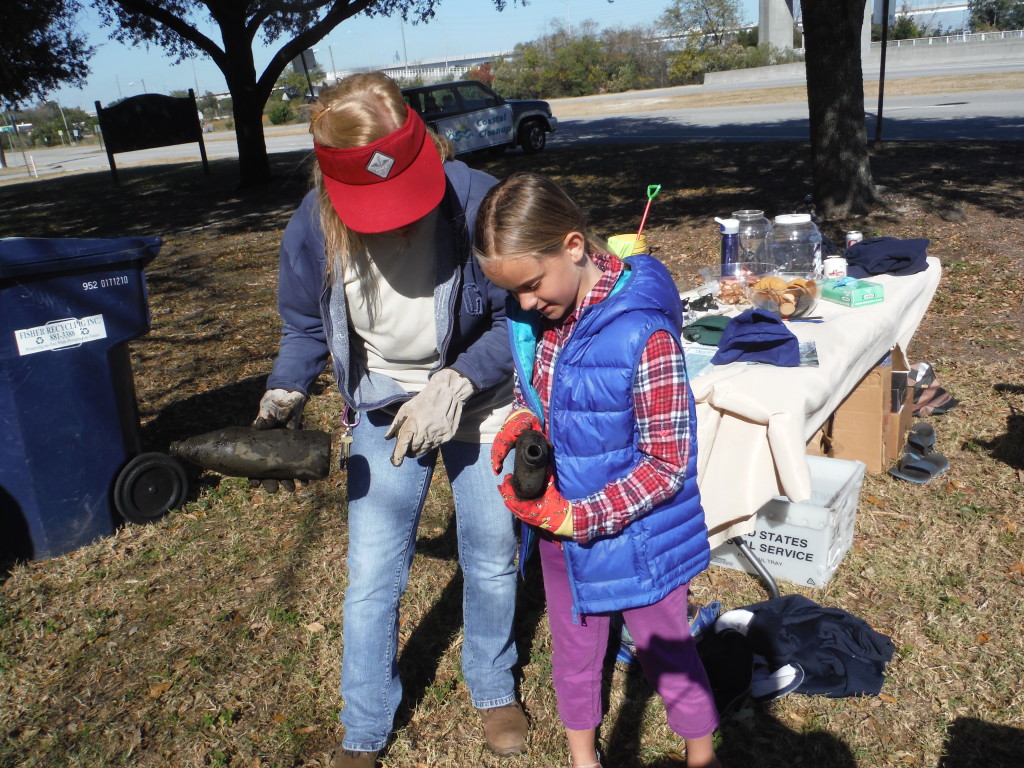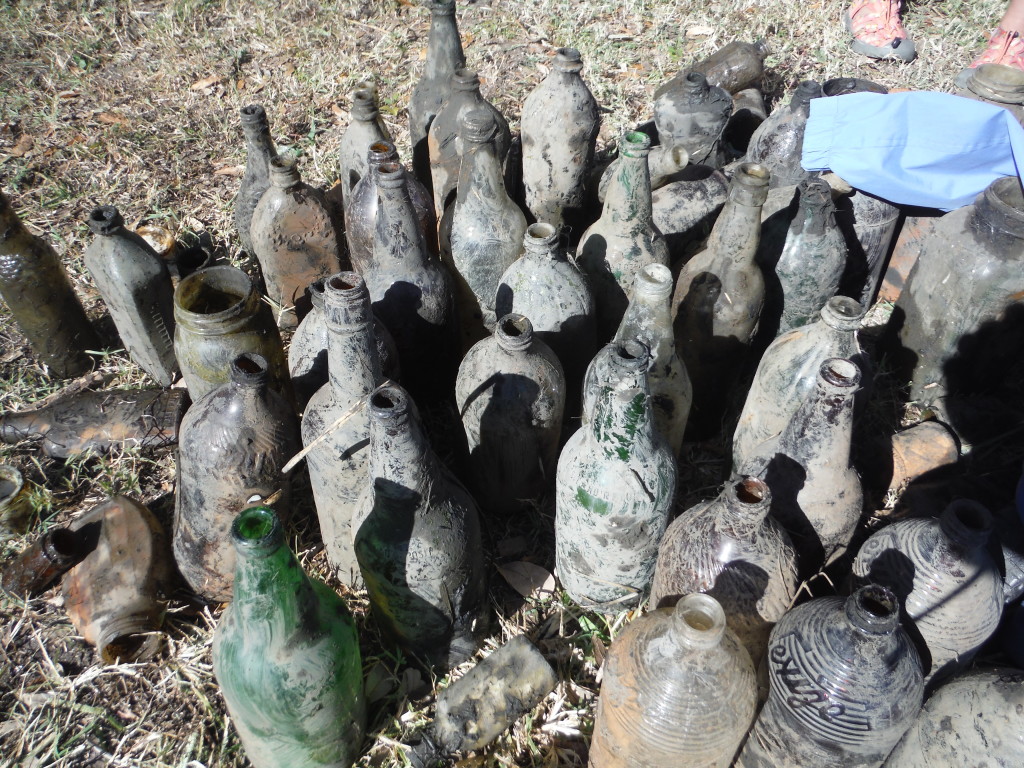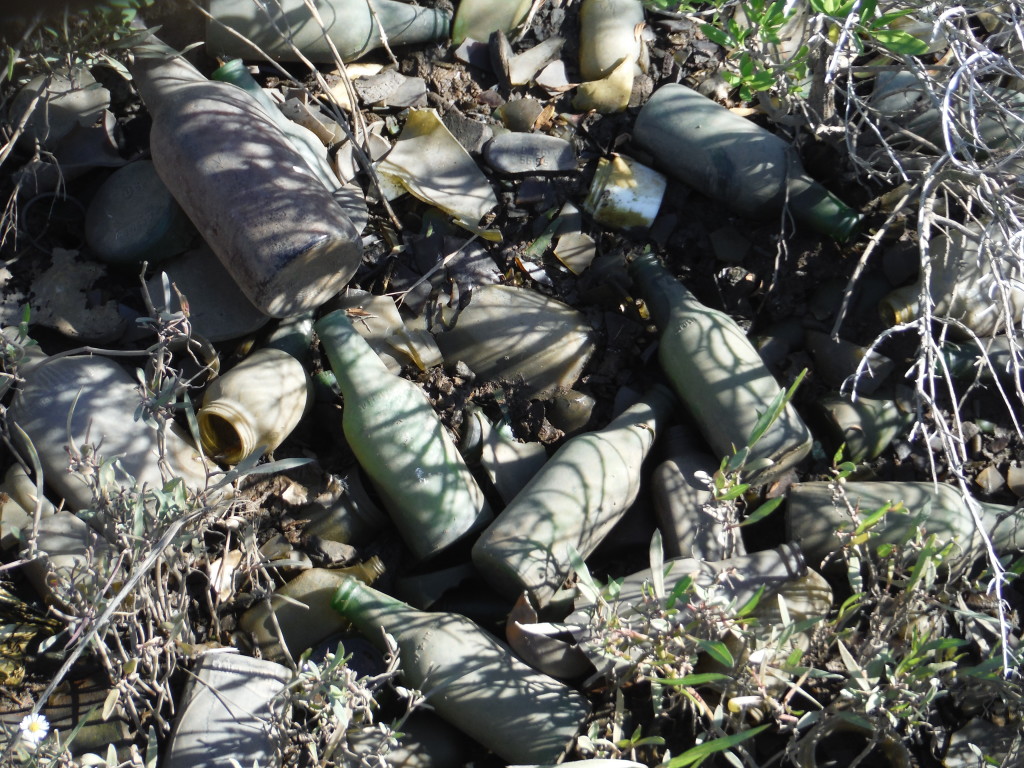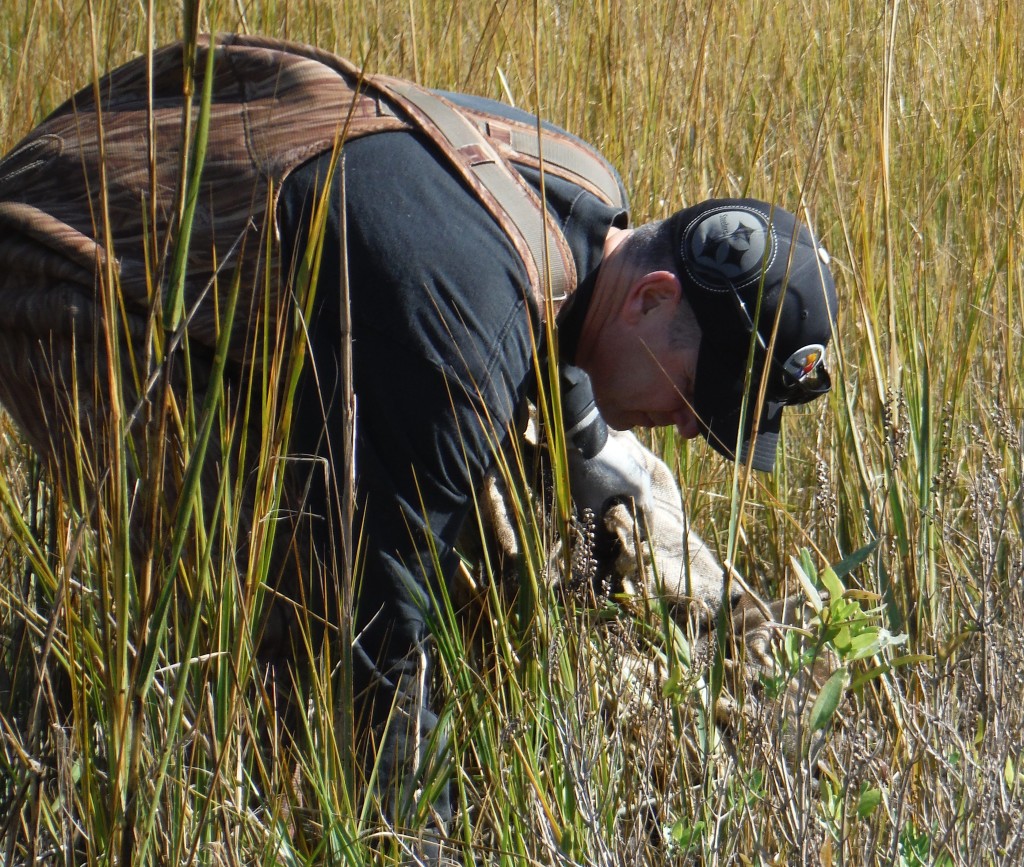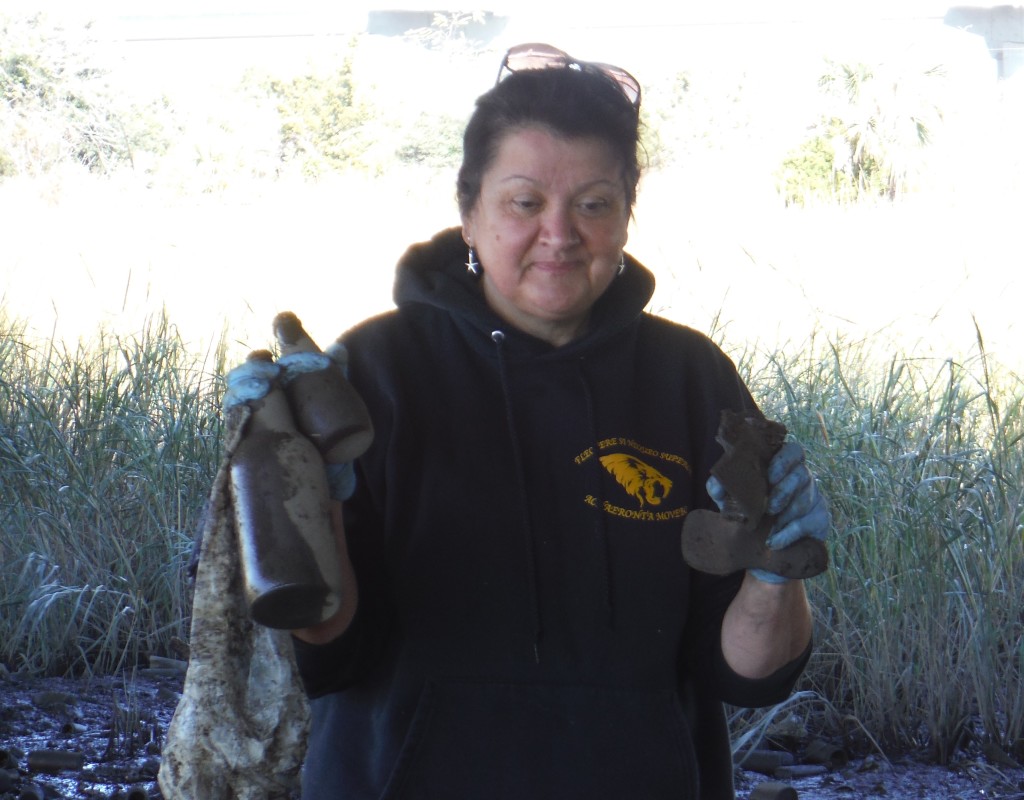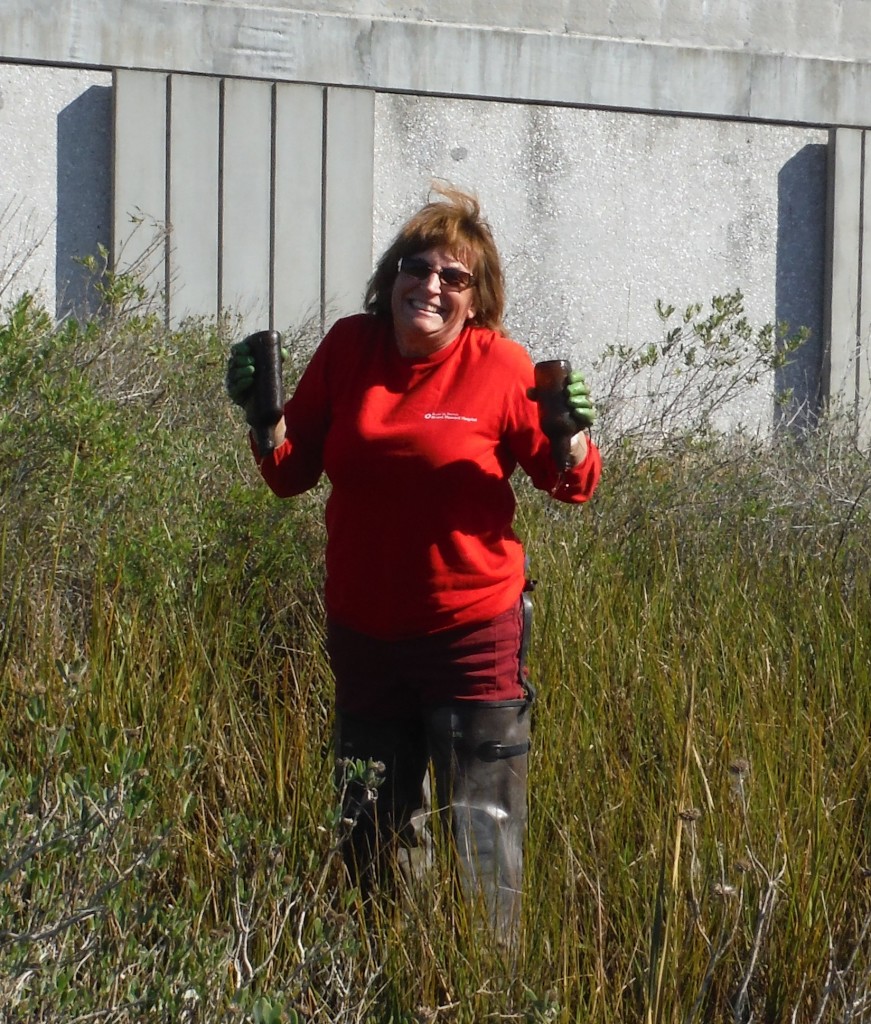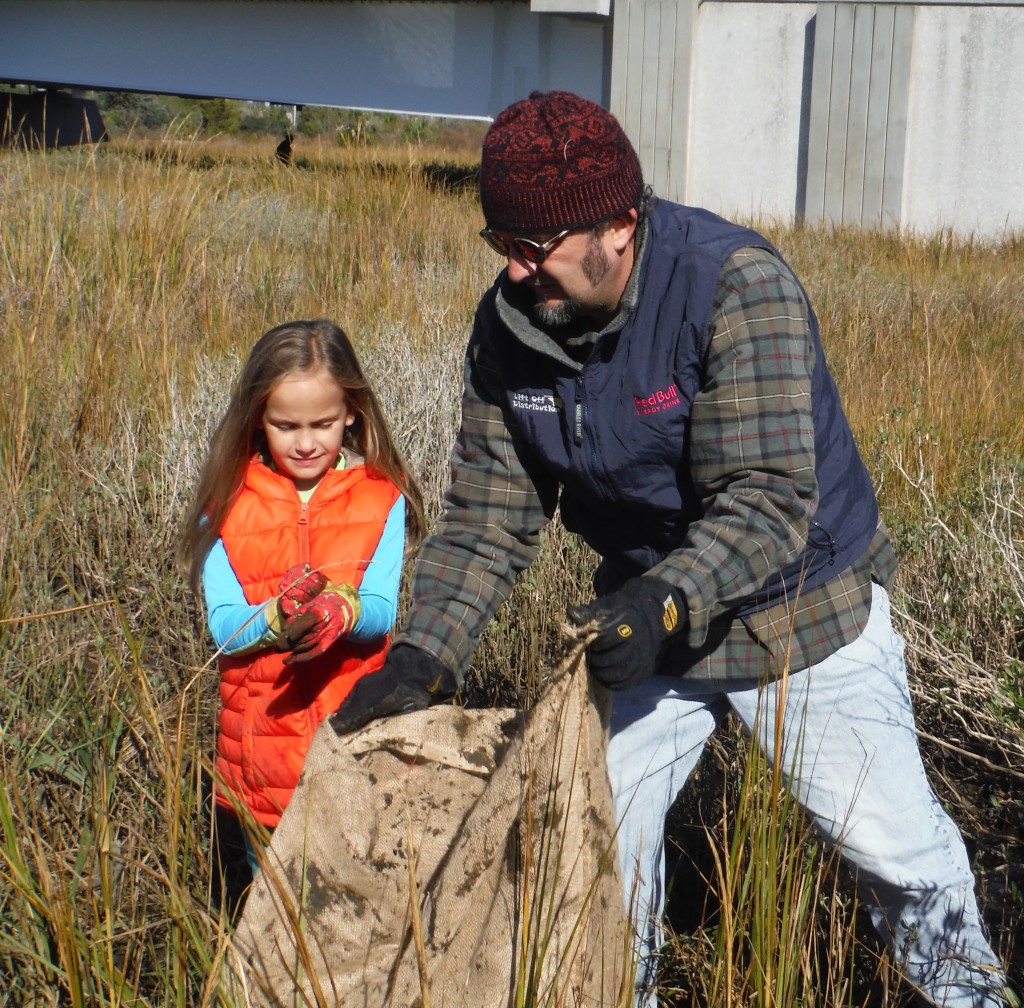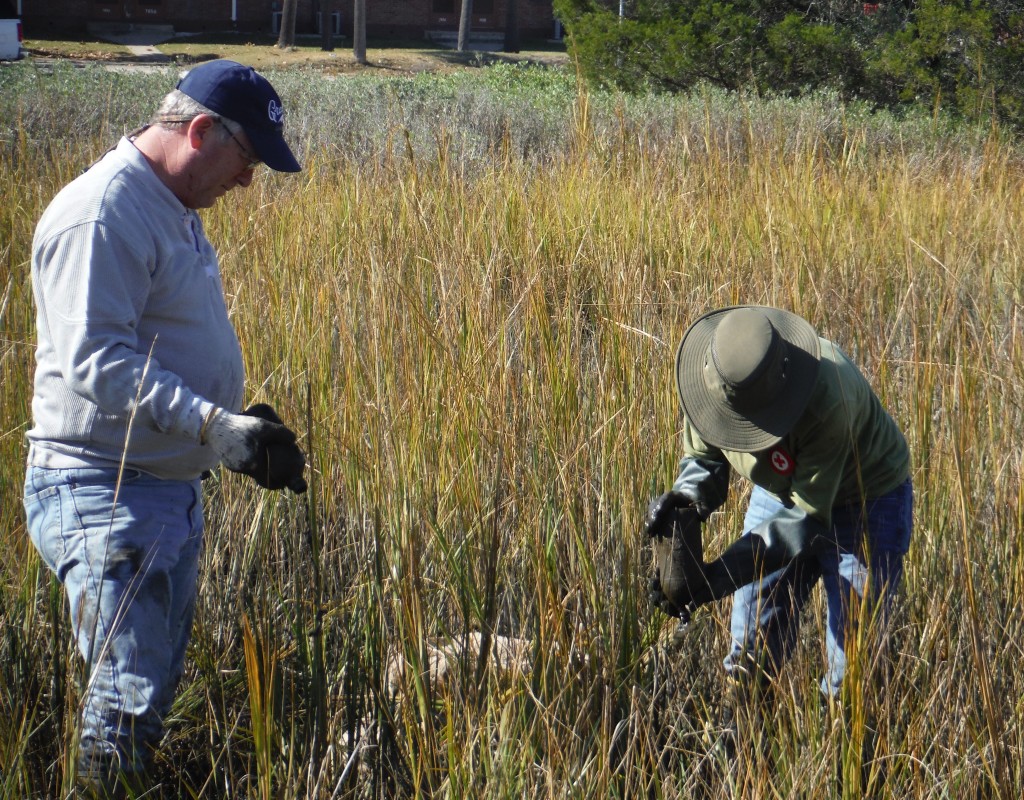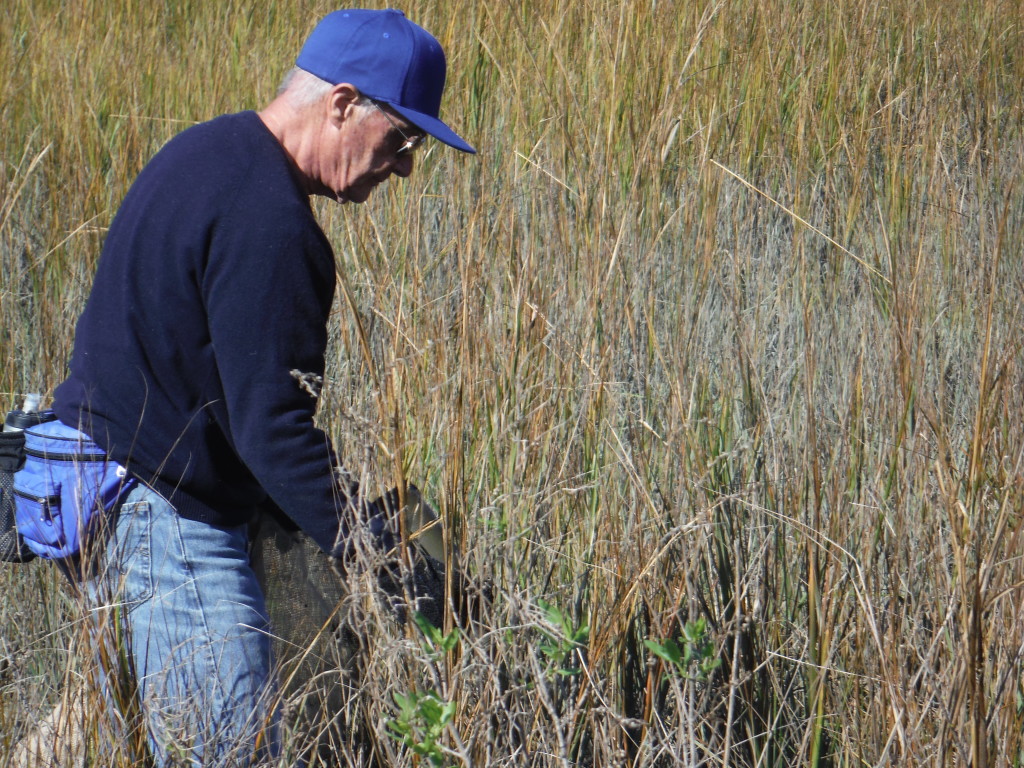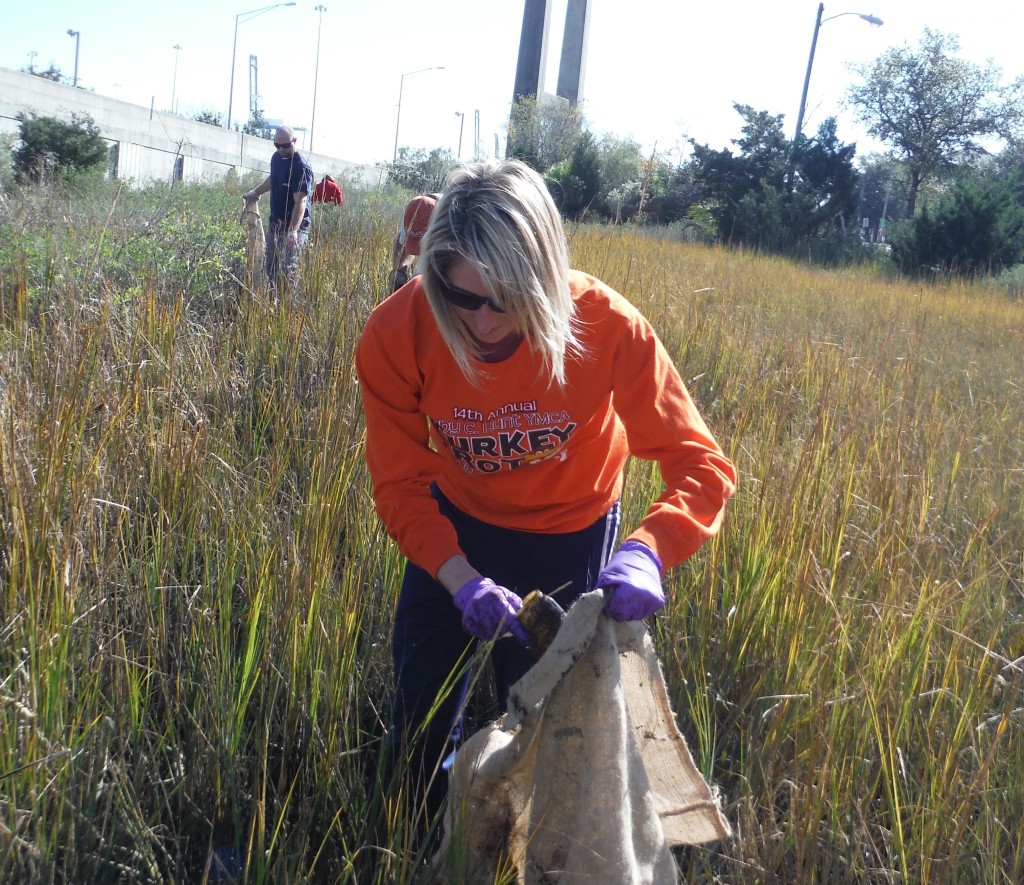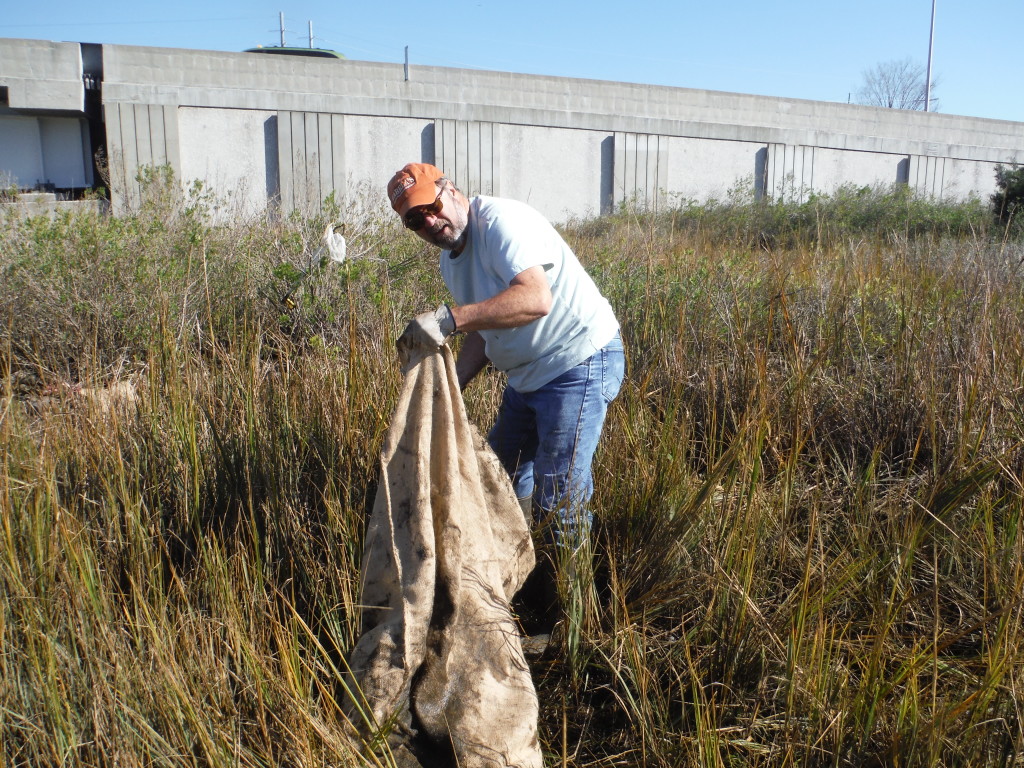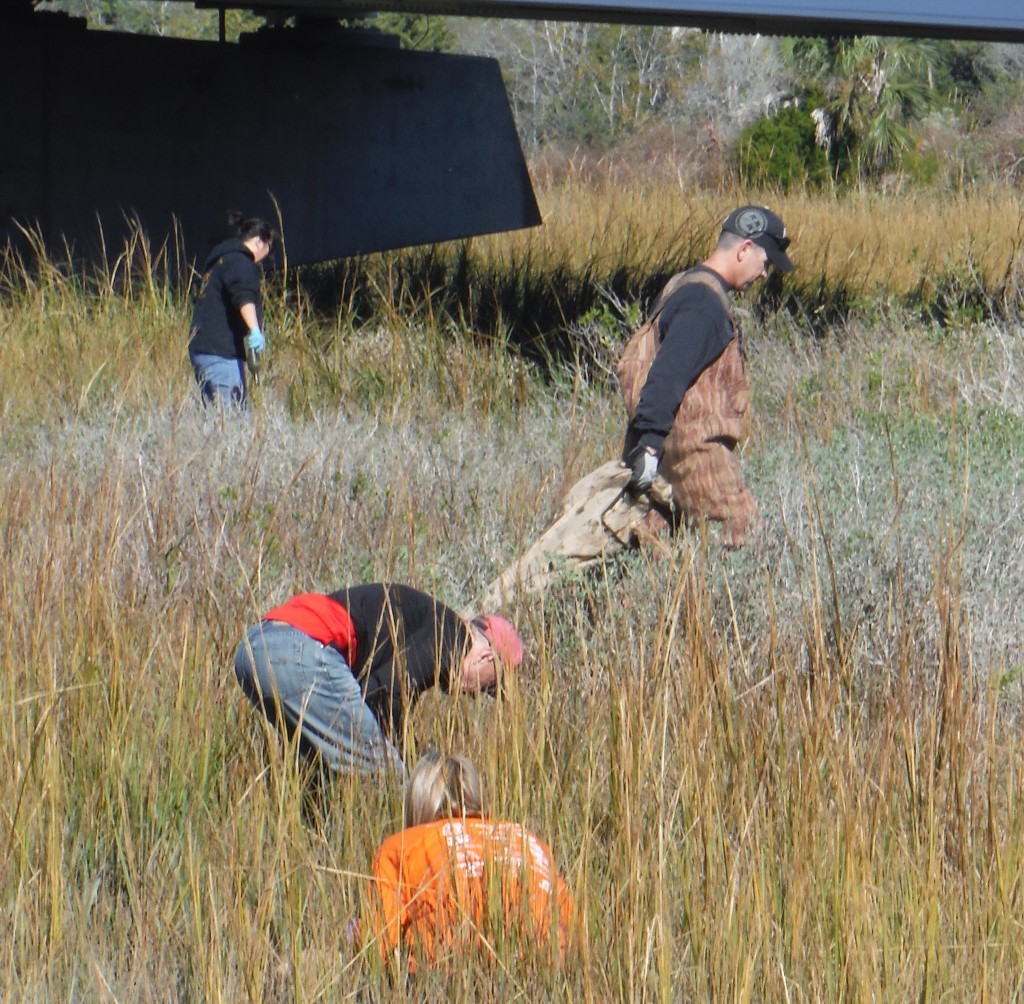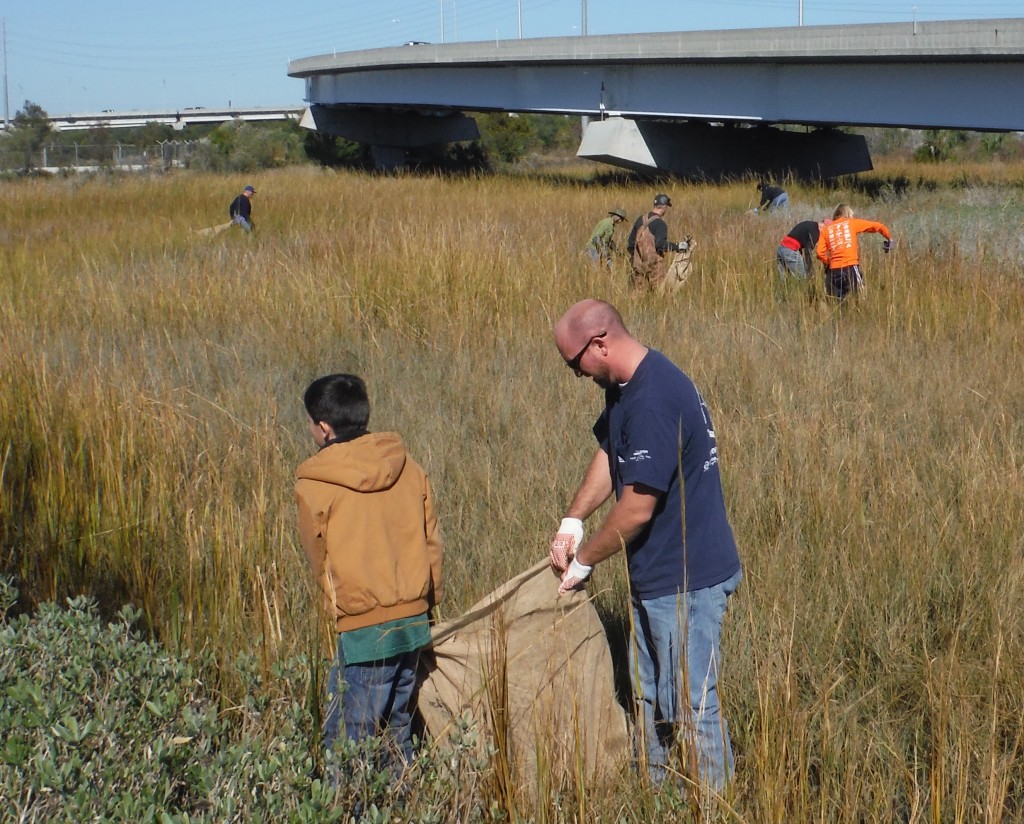This location was the old glass and ceramic dump site for the Charleston downtown incinerator. Up until the late 1950s, all the glass and other glass-like materials that could not burn were dumped in the marsh for fill development. The glass in the marsh is significantly deeper than just the surface. It is, quite literally, decades of material used to fill and expand the surface of the marsh. What happens over time is that the broken glass works its way down into the mud while the whole bottles with trapped air continue to float to the surface. The surrounding marsh grass and shrubs trap the floating bottles in place during high tide preventing the bottles from floating out to sea.
Bottles in the tidal marshes have a negative impact on wildlife in the area. Surface bottles prevent plant growth under their footprint. The average bottle has a footprint of 2 inches by 6 inches, occupying 12 square inches of marshland. There is a cumulative effect when you have thousands of bottles occupying an area. On this cleanup, we could see this effect firsthand. There were collections of bottles grouped together by tidal floating and within each of these areas was an open space filled with bottles while lacking any growth of marsh grass underneath.
To tackle this cleanup, Wounded Nature-Working Veterans and our volunteers were divided into 3 groups. One group was in the tidal marsh collecting and loading the bottles into burlap sacks, while the second group transported the burlap sacks by wagon, cart, and wheelbarrow, back to our third group who sorted the glass from plastics and metal.
We removed approximately 3,500 bottles equating to 2,250 pounds of glass.
All of the glass from this cleanup (minus the unique pieces retained by our volunteers) was collected and is being recycled by Fisher Recycling.
We filled all of the recycling bins we had available and the truck hauled the bin trailer with bottles. This is an area that requires at least another 10 days of cleanup utilizing at least 30 people on each cleanup. Thousands of bottles remain in this area.
This cleanup was a unique experience and did make a difference.
A special thanks to Liquid Culture, for once again supplying water and beverages to keep our volunteers hydrated.
